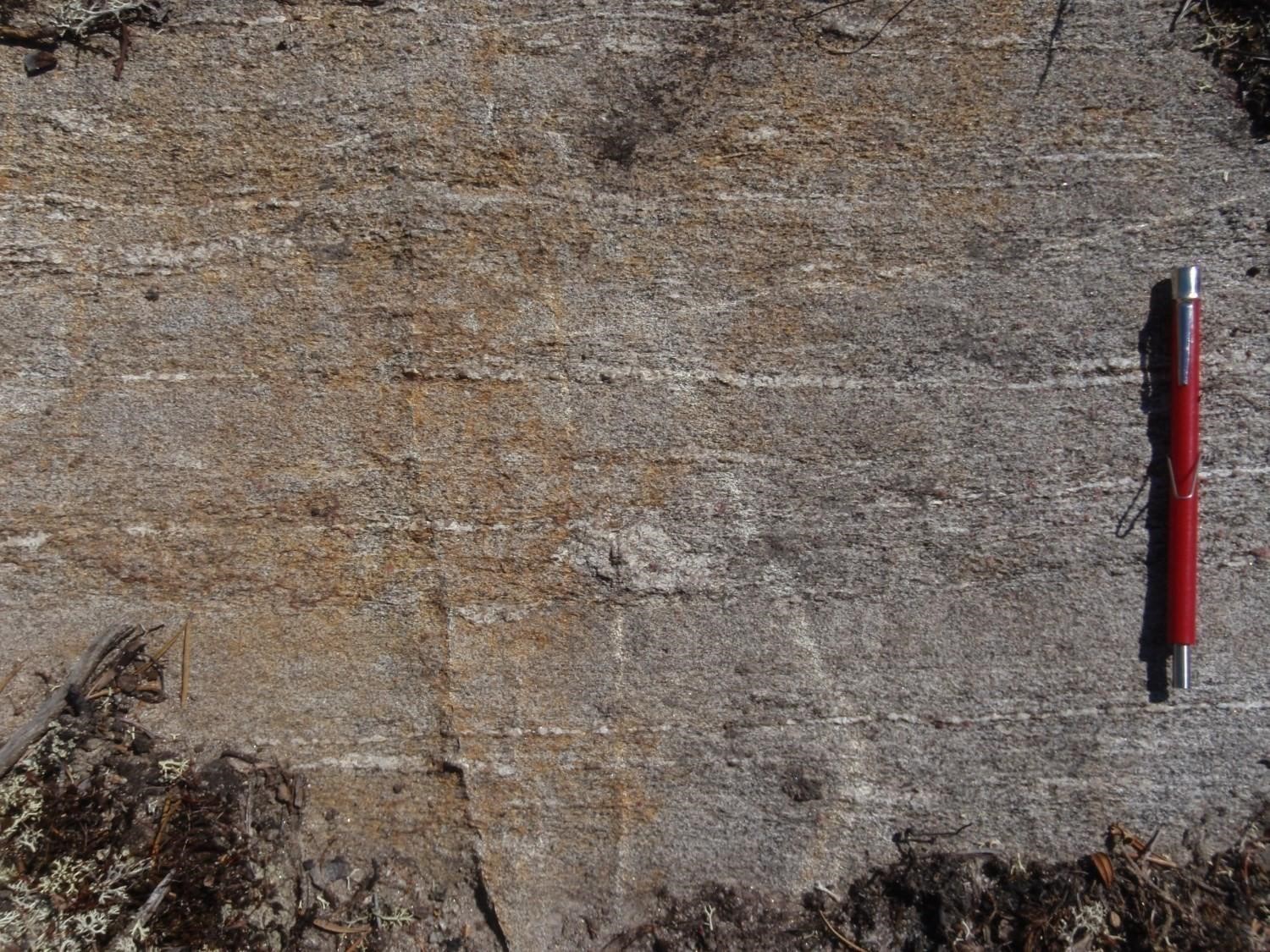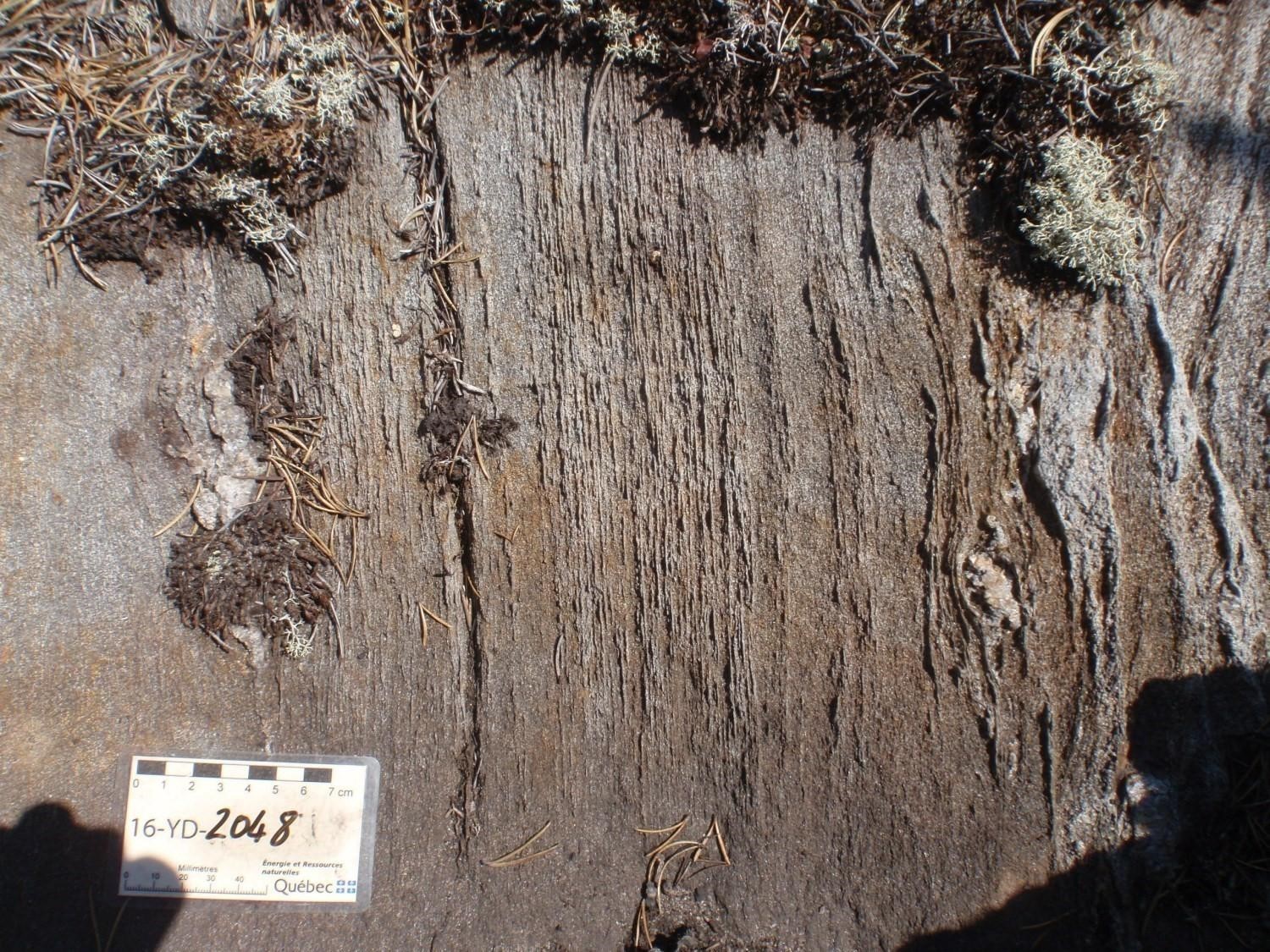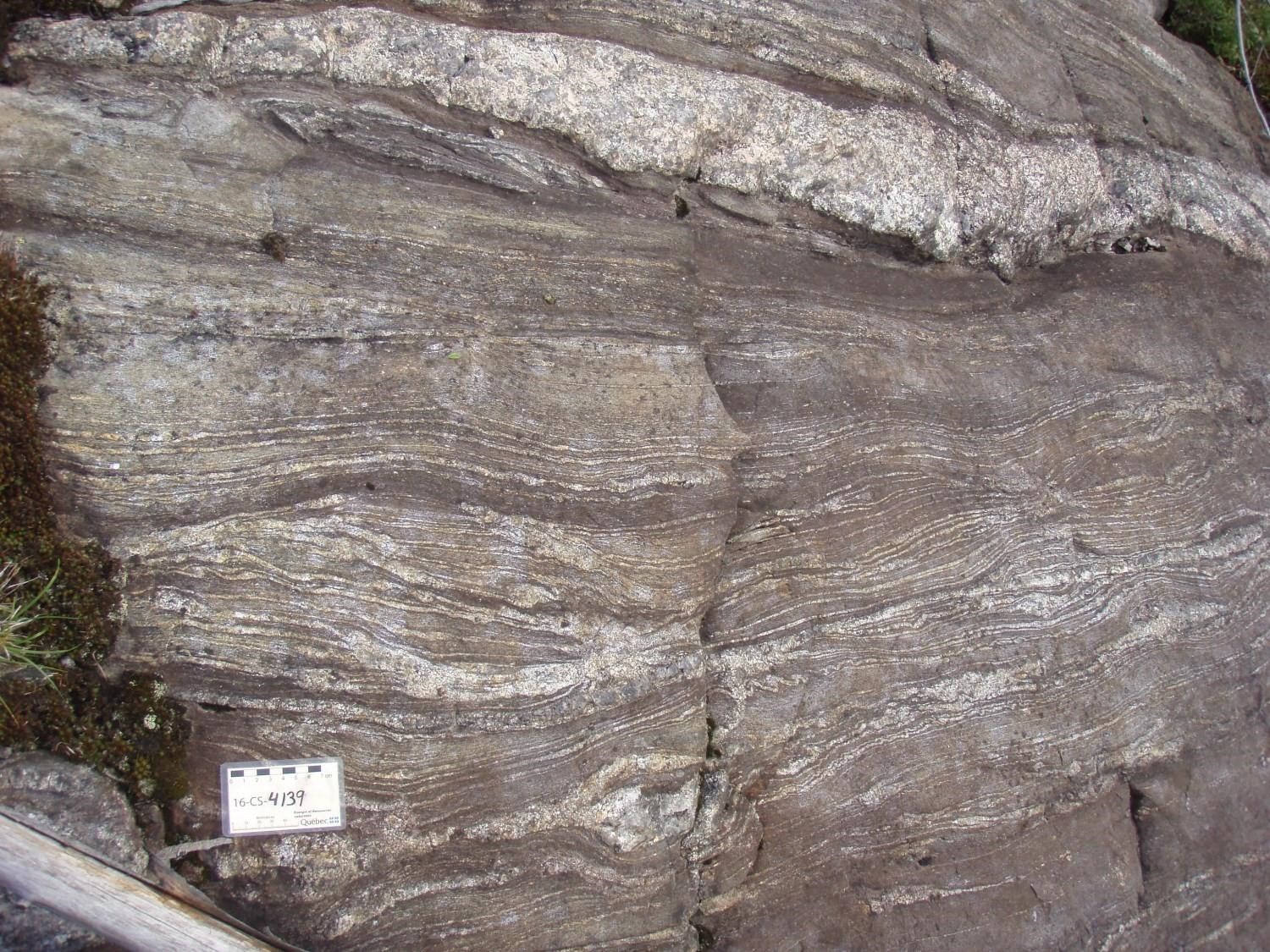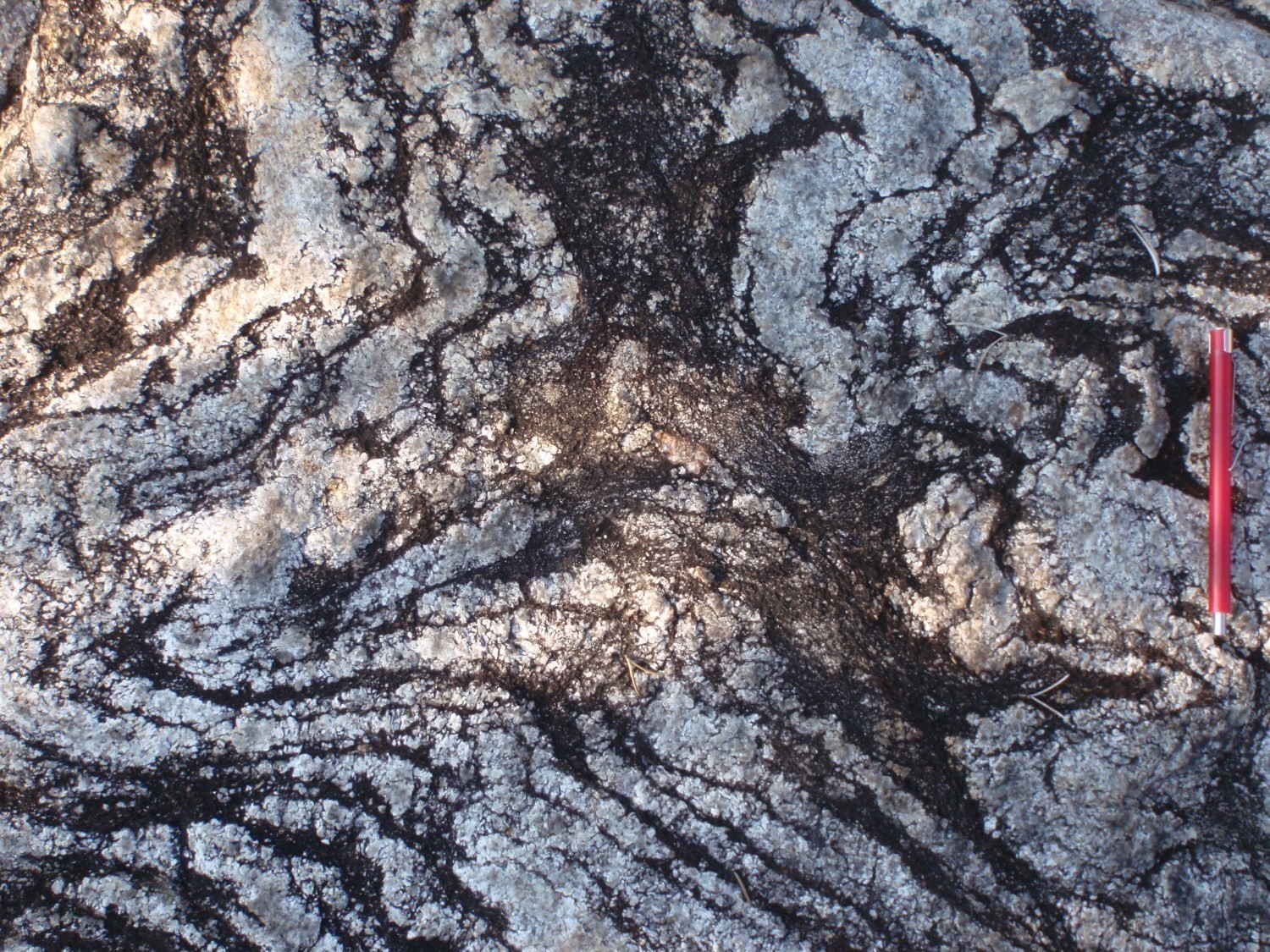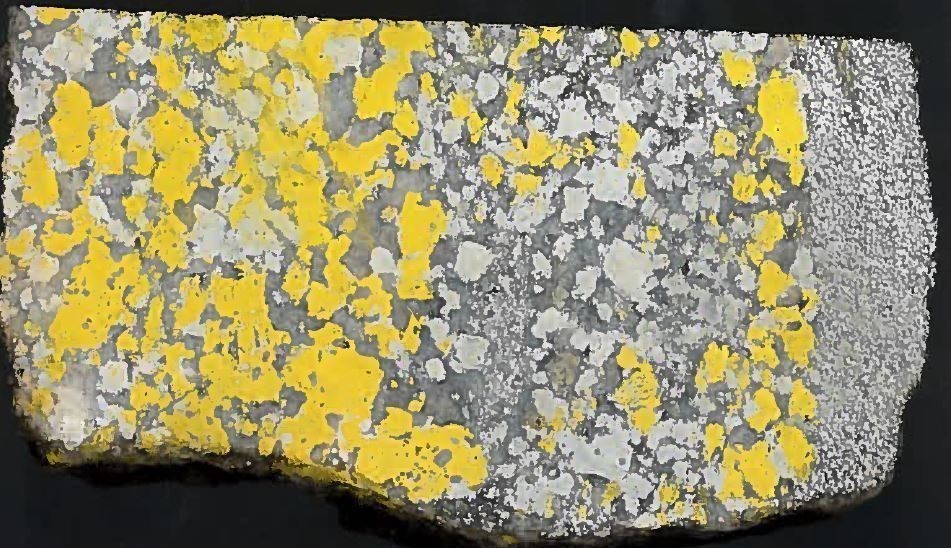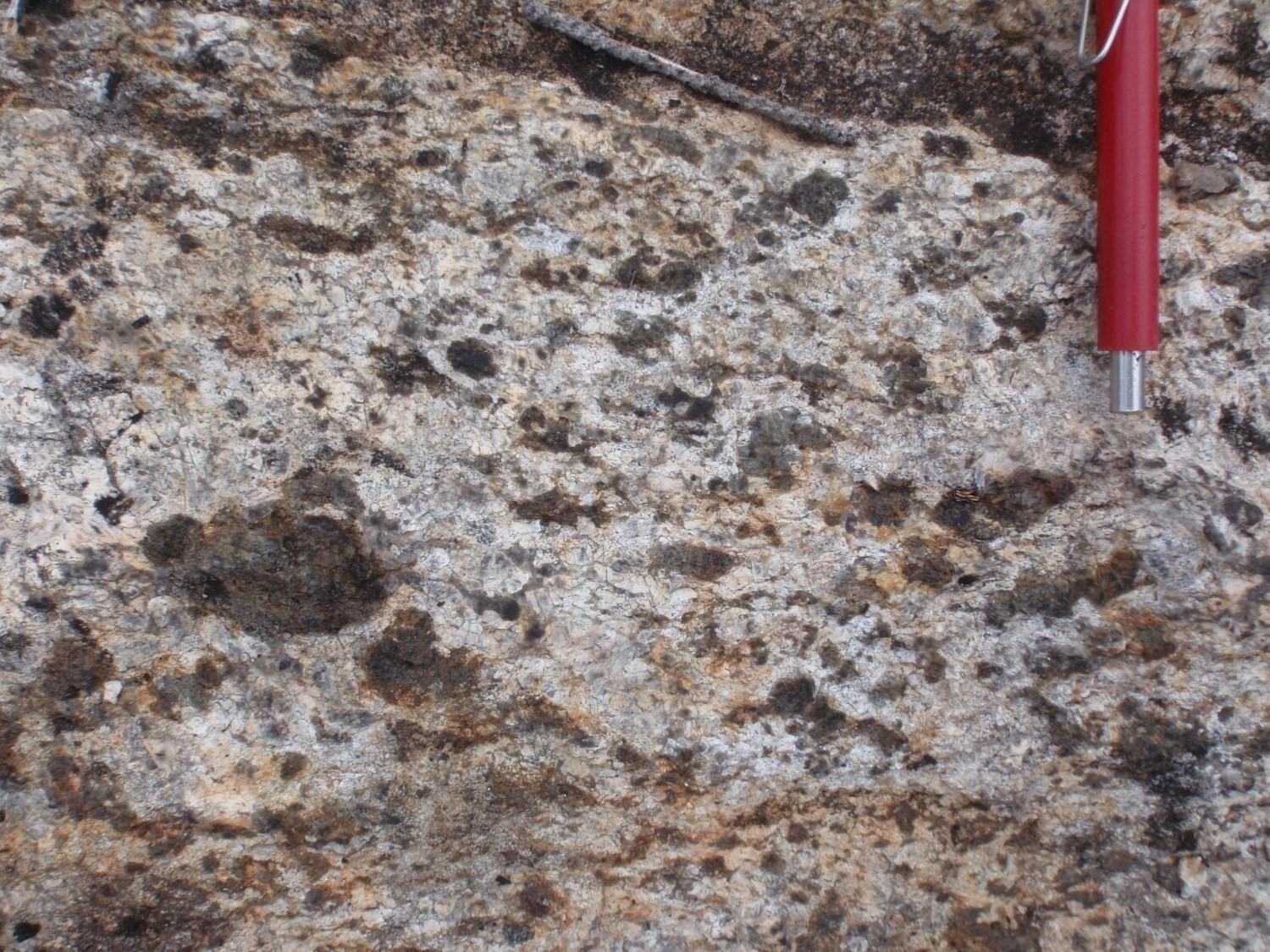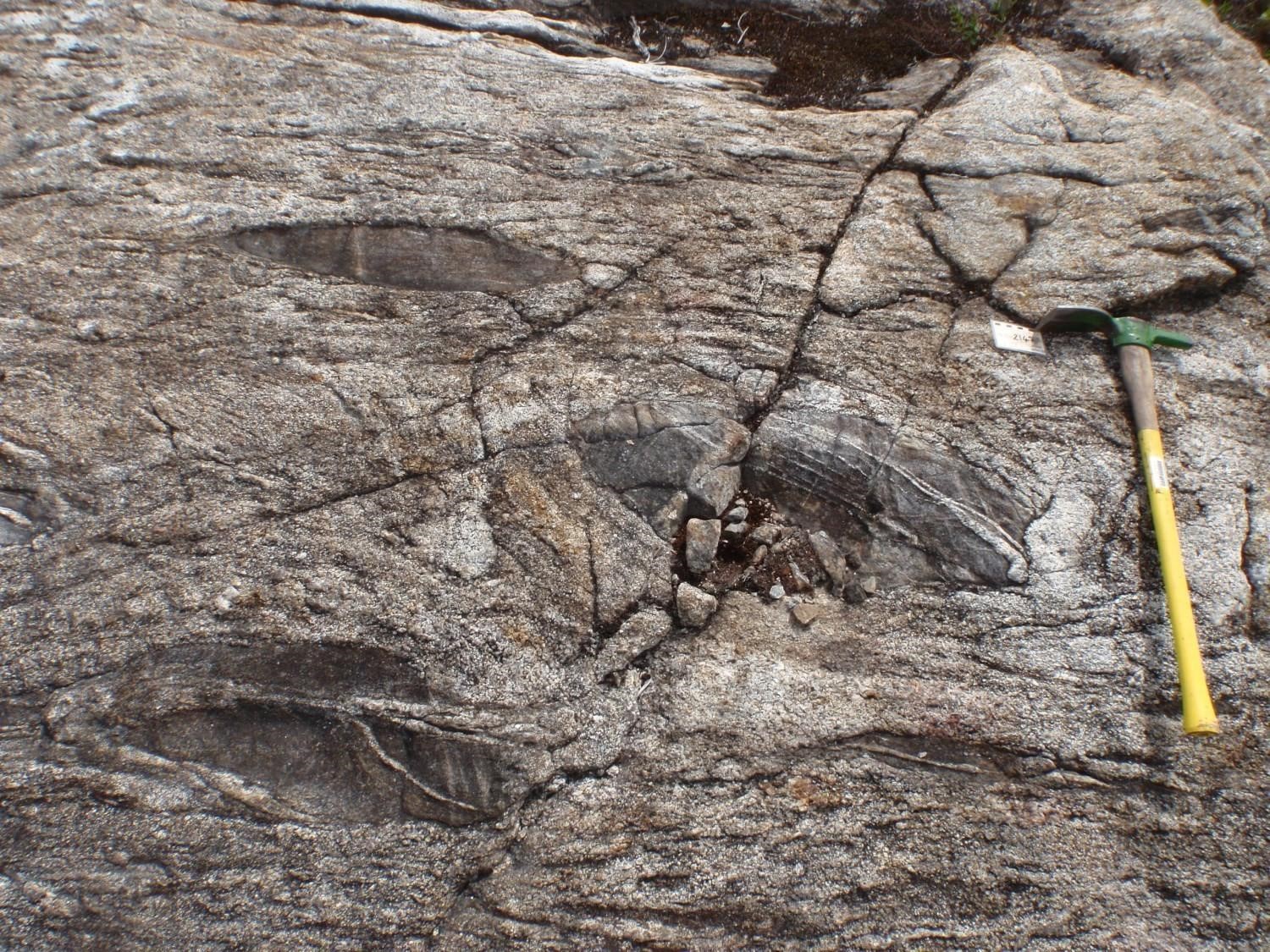
Last modified: 19 January 2024
Translation of original French
| Author: | Bandyayera and Daoudene, 2018 |
| Age: | Neoarchean |
| Reference section: | None |
| Type area: | Mezières Lake area (NTS sheet 32N06) |
| Geological province: | Superior Province |
| Geological subdivision: | Nemiscau Subprovince |
| Lithology: | Metasedimentary and migmatitic rocks |
| Type: | Lithodemic |
| Rank: | Complex |
| Status: | Formal |
| Use: | Active |
None
Background
The first descriptions of these lithologies were written by Remick (1963) and Gillain (1964). The name “Rupert Group” was introduced in the early 2000s as part of the compilation work in the Geomining Information System (SIGÉOM) to describe all metasedimentary rocks in the Nemiscau Subprovince. Bandyayera and Daoudene (2018) formalized this unit and renamed it the “Rupert Complex” due to the varied nature (metamorphic and igneous) of this unit. Considering that the Lac des Montagnes belt is no longer part of the Nemiscau (Pedreira Pérez et al., 2019; Pedreira Pérez et al., 2020; Bandyayera et al., 2022), the Rupert Complex sedimentary rocks located in this belt have been reassigned to the Voirdye Formation (Bandyayera and Caron-Côté, 2019). This formation is distinguished by the ubiquity of primary sedimentary structures, the abundance of sedimentary rocks with metamorphic mineral assemblages (e.g. biotite-sillimanite-cordierite) and the scarcity of migmatized sedimentary rocks (<1% of this unit). In contrast, the Rupert Complex is 95% migmatitic (diatexite and metatexite), and metamorphic mineral assemblages such as sillimanite-cordierite in migmatized paragneiss are generally absent.
Description
The Rupert Complex is composed of five units consisting of: 1) amphibolite derived from basalt, with local presence of amphibolitized intermediate to felsic tuff layers (nAru1); 2) biotite-hornblende ± garnet ± sillimanite ± cordierite paragneiss, containing <10% mobilisate (nAru2); 3) biotite-hornblende migmatitized paragneiss, containing 10-20% mobilisate (nAru3); 4) metatexite derived from paragneiss, containing 20-50% mobilisate (nAru4); and 5) diatextite derived from paragneiss, containing 50-90% mobilisate (nAru5).
Rupert Complex 1 (nAru1): Amphibolite derived from basalt, with local presence of amphibolitized intermediate to felsic tuff layers
Unit nAru1 consists of amphibolite klippes dark-grey in fresh and altered surfaces, medium to coarse-grained, granoblastic, highly foliated to banded. Primary volcanic structures are rarely preserved, although in the narrow band of amphibolite located between the Rupert and Échancrure shear zones, highly deformed pillow basalt is observed in places. The banded structure is characterized by tectonometamorphic reorganization of the amphibolite, followed by separation into bands of varying hornblende content. The amphibolite is composed of elongated black hornblende crystals (55-65%), surrounded by sericitized plagioclase of composition An25 (25-40%) and metamorphic quartz. Epidote and biotite are ubiquitous. Accessory minerals consist of apatite and titanite.
Amphibolite bands are observed in contact with the Wettigo Complex gneiss or in enclaves in migmatites of the Rupert Complex.
Rupert Complex 2 (nAru2): Biotite-Hornblende ± Garnet ± Sillimanite ± Cordierite Paragneiss Containing <10% Mobilisate
Unit nAru1 consists of biotite-hornblende-garnet ± sillimanite ± cordierite paragneiss, middle grey in fresh exposure and slightly rusty brownish grey in altered surface. The protolith is generally a wacke, and locally arkoses, which have undergone little sediment recycling (Heron, 1988). From west to east, there is an increase in the proportion of sillimanite and cordierite in this unit. Sillimanite-cordierite paragneiss are more prevalent in the Champion Lake region (NTS sheet 32N09), while they are rare or absent in the west, in the Nemiscau and Mezières lakes region (sheets 32N06 and 32N07). The medium-grained rock has a granoblastic, poekiloblastic to lepidoblastic texture. Biotite (5-30%) and hornblende (2-10%) make up 40% of the rock. The disseminated blackbiotite flakes give a pepper and salt appearance to the rock. In thin section, biotite flakes are subhedral to anhedral, brown-orange and very rich in zircon inclusions. Pink or red garnet (2-15%) is in the form of poekiloblasts or millimetric to centimetric porphyroblasts, anhedral or amoeboid, with biotite and quartz inclusions. Aluminosilicates (sillimanite and cordierite) are quite rare and are generally concentrated in specific horizons, probably more pelitic, where their concentration can be as high as 20%. In thin section, cordierite poekiloblasts are anhedral, locally amoeboid, with many inclusions of quartz, plagioclase and biotite. Aluminosilicate paragneiss also contain 5-10% relatively random sillimanite clusters, muscovite and tourmaline in small amounts (1%). Orthopyroxene is only observed in paragneiss of the highly magnetic band located south of the Rivière Rupert Shear Zone (RRSZ). It is anhedral, intensely fractured and altered. Tourmaline, apatite and zircon are common accessory minerals in paragneiss.
The paragneiss is poorly deformed and weakly migmatized in places. When present, mobilisate typically represents less than 10% of the rock. In places, there are decametric paragneiss strips showing preserved primary bedding represented by coarse-grained beds, centimetric to metric, interstratified with fine to medium-grained beds. The finer-grained beds usually display parallel laminations. In the strip located southeast of Nemiscau Lake, in contact with amphibolitized basalts of the Lac des Montagnes Group, unit nAru1 shows in places bedding defined by the alternation of centimetric to decimetric metawacke beds characterized by the presence of positive-relief aluminosilicate porphyroblasts and beds lacking them.
In places, unit nAru1 contains up to 10% granitic or tonalitic mobilisate in the form of segregations conformable to foliation or white pegmatic granite clusters. The millimetric to centimetric, locally decimetric segregations are discontinuous, folded or boudinaged. Mobilisate also occurs as discontinuous leucocratic veins or veinlets injected parallel to foliation in the paragneiss. These injections form ptygmatic folds with axial trace parallel to foliation. Mobilisate is usually lined with biotite-rich rims and contains biotite (5%) and locally garnet 5%). The nAru1 unit contains, in places, metric horizons of migmatized paragneiss that contain 10-20% mobilisate. Migmatitic banding is conformable with regional foliation.
Chemically, the well-preserved paragneiss in unit nAru1 all originate from a grauwacke derived from erosion of felsic intrusive rocks of tonalitic to granodioritic composition. Low Zr/Sc ratios suggest that these rocks have not undergone sediment recycling.
Rupert Complex 3 (nAru3): Migmatitized Paragneiss Containing 10-20% Mobilisate
The nAru2 unit consists of migmatitized paragneiss containing 10 to 20% mobilisate. In the central part of the Mezières Lake region (sheet 32N06), south of the Rupert River, it represents a kilometric unit in contact with faults or possibly in discordance with volcanics of the Lac des Montagnes Group. The nAru2 unit consists of alternating straight, metre to decametre thick biotite ± garnet paragneiss bands characterized by parallel laminations and metatexite bands. Mobilisate intrusions and segregations are essentially parallel to foliation.
The paragneiss have a granolepidoblastic texture and a pepper and salt altered surface. It contains 10-25% biotite and 1-10% hornblende. Non-migmatitized paragneiss horizons have 5-10% garnet, while more migmatized bands contain up to 15%. Garnet is present inside the mobilisate, either in contact with it and melanosome, or in biotite rims within the mobilisate. In this case, garnet porphyroblasts can reach centimetre size. The mobilisate typically contains 1-5% garnet, rising to 15% in places. The degree of partial melting of paragneiss is very heterogeneous and can vary from one outcrop to another. This is manifested by diffuse leucosome spots scattered in the rock, clusters or pockets of heterogranular leucosome and biotite-rimed mobilisate leucocratic segregations. The leucosome is also characterized by the ubiquitous occurrence of biotite schlierens.
The nAru2 unit also has metric to decametric granitic intrusions, which are conformable with foliation planes. Granite generally shows magmatic foliation and graphic texture. It contains 1-3% garnet, 1-5% biotite and 1-3% tourmaline. Its contact with paragneiss is highly irregular, heterogeneous and enriched in biotite.
Rupert Complex 4 (nAru4): Metatexite Derived from Paragneiss Containing 20-50% Mobilisate
Unit nAru3 is essentially distinguished from the nAru2 unit by a higher proportion of mobilisate (20-50%) in the migmatite. It is a biotite-garnet ± orthopyroxene metatexite with nebulitic or stromatic texture. Biotite represents 10-30% of the rock, garnet 1-20%, and orthopyroxene less than 5%. The metatexite is typically composed of medium-grained, grey-brown paragneiss, foliated, bedded and magnetic (the paleosome) and 30% medium to coarse-grained pale beige granitic mobilisate associated with biotite schlierens. The mobilisate is usually in the form of conformable to subconformable lenses or ribbons of heterogranular white granite, medium to coarse-grained or locally pegmatitic. Biotite flakes are parallel with foliation planes in the host rock. Stromatic banding is characterized by alternating centimetric bands of partially melted paragneiss with boudinaged ribbons of leucosome rimed by biotite. Some metatexite outcrops show horizons of migmatitized paragneiss containing 10-20% mobilisate that alternate with little or no melted horizons (paleosome) where compositional banding is preserved. In the medium-grained leucosome, plagioclase and quartz have an amoeboid shape, and some quartz grains show a chessboard texture.
In the southern part of the Nemiscau and Mezières lakes region, south of the Lac de l’Échancrure Shear Zone, unit nAru3 unit forms highly magnetic kilometric bands within a diatexite sequence (nAru4 unit). In this area, both units (nAru3 and nAru4) are characterized by ubiquitous occurrence of orthopyroxene and garnet in granitic mobilisate, melted paragneiss and paragneiss (paleosome) horizons. It should be noted that although this granulite facies domain shows the most advanced partial melting process of the region, there are still decametric strips of paragneiss with well-preserved primary structures.
Rupert Complex 5 (nAru5): Diatexite Derived from Paragneiss Containing 50-90% Mobilisate
The diatexite derived from paragneiss unit (nAru4) accounts for up to 60% of the area of the Rupert Complex. It is in the form of elongated kilometric strips of migmatite containing 50 to 90% mobilisate. Pre-partial melting textures are generally no longer visible in the neosome, and have been replaced by new flow textures associated with the dynamic ultrametamorphism process (Sawyer, 2008). Diatexite is generally heterogeneous with nebulitic or stromatic texture. Overall, the rock consists of quartz, plagioclase, K-feldspar and 10 to 30% mafic minerals including reddish biotite and orthopyroxene, indicating recrystallization under high-temperature conditions of the granulite facies.
The stromatic texture is very common. It corresponds to migmatitic banding characterized by alternating millimetric to centimetric ribbons of biotite schlierens mobilisate and variably migmatitized paragneiss ribbons. It is possible that foliation marked by the alignment of schlierens is the result of magmatic flow in the diatexite (Sawyer, 2008). Discontinuous migmatitic banding and heterogeneity in diatexites are intrinsically associated with the presence of highly digested paragneiss enclaves elongated parallel to regional foliation. There is a gradual change in particle size between the partially melted paragneiss and the central part of the mobilisate bands, from medium to coarse-grain size.
Diatexite is characterized by the presence of many biotite schlierens (up to 30%) in the form of disseminated millimetric flakes that represent remains of the melted paragneiss. Biotite also forms centimetric clusters in the mobilisate. This mineral represents the main component of the melanosome and forms rims at contact between mobilisate and melanosome bands. In thin section, biotite is in the form of subhedral to anhedral flakes, brown-orange or brownish, locally intensely chloritized, containing less than 1% zircon inclusions. Quartz grains commonly exhibit a chessboard texture.
Garnet makes up to 15% of the rock, but its distribution is very uneven from an outcrop to another or even accross banding. In general, the size of garnets increases from melanosome to mobilisate, reaching 2 cm in places. In thin section, garnet occurs as anhedral grains or rounded clusters, very regular in size, disseminated, stocky, fractured and slightly pink. Orthopyroxene and garnet generally occur as poekilitic crystals, locally centimetric. Clinopyroxene was observed in the mafic enclave horizons located between the Lac de l’Échancrure Shear Zone and the Lac Naquiperdu Shear Zone (sheets 3206 and 3207).
The mobilisate is composed of in situ leucosome and leucocratic intrusions. These granitic to locally tonalitic rocks are heterogranular (medium, coarse to pegmatitic) and contain biotite ± garnet ± orthopyroxene. They are pinkish white to light grey in altered surface and beige to pinkish white in fresh exposure. The mobilisate contains coarse-grained to pegmatitic pockets, biotite schlierens and unmelted paragneiss restites. The highly irregular contact between the mobilisate and the palaeosome generally shows a metasomatic reaction rim enriched in muscovite ± hornblende ± biotite.
Diatexite contains 10 to 30% paragneiss in the form of centimetric to decimetric enclaves or weakly to moderately melted ribbons. Paragneiss is medium-grained, foliated, brownish grey in altered surface and medium grey in fresh exposure. It contains up to 30% biotite and 15% garnet. In paragneiss enclaves, the mobilisate is composed of leucosome trails, and discontinuous, boudinaged or folded ribbons. Paragneiss is also heavily impregnated with leucosome in small millimetric to centimetric clusters. These enclaves are generally stretched and commonly have structures associated with deformation phases prior to incorporation into the diatexite mass. Planar structures are unconformable with foliation of the host diatexite. Enclaves look at places like rafts floating in the ultrametamorphic magma. Paleosome is locally observed in the middle of the porphyritic diatexite in the form of rafts, or in the banded diatexite in the form of lenses subparallel to migmatitic banding. Some enclaves described as paleosome contain up to 2% diffuse leucosome patches. In addition to ubiquitous paragneiss enclaves, the diatexite locally contains amphibolite and diorite enclaves.
In some places, diatexite is characterized by a porphyroceous texture marked by the presence of 10 to 20% euhedral to subhedral white K-felspar phenocrystals of 1-3 cm edges, disseminated in the melted paragneiss or bathing in a biotite-rich granitic matrix. Kilometric zones are found in the southwestern part of the Lake Boisrobert area (sheet 32N11) where this homogenous porphyraceous diatexite dominates and contains many paragneiss enclaves. In this area, diatexite also contains metric to decametric horizons of highly migmatitized banded amphibolite. In porphyraceous rocks, biotite flakes form clusters that fill the spaces between microcline, plagioclase or quartz phenocrystals. Some K-feldspar phenocrystals show a myrmekitic texture. Several quartz grains have a chessboard texture. Apatite is a fairly large amount (5%) in the rock and forms stocky prisms.
In the area between the Lac de l’Échancrure Shear Zone and the Lac Naquiperdu Shear Zone (sheets 3206 and 3207), unit nAru4 forms kilometric strips closely associated with very high magnetic susceptibility areas. At this location, diatexite generally shows a biotite-orthopyroxene ± clinopyroxene ± garnet ± magnetite assemblage. This assemblage is observed in the segregated granitic mobilisate (charnockitic), paleosome and neosome. Orthopyroxene is altered to a mixture of serpentine, amphibole and iron oxides. Pyroxene, garnet and magnetite crystals are generally millimetre-sized, but reach centimetre sizes in mobilisate.
Thickness and distribution
The Rupert Complex represents the main unit of the Nemiscau Subprovince. It extends in an E-W direction over ≥200 km in length and measures 10 km to 80 km in width. Diatexite (nAru5) accounts for ≥60% of this unit’s surface area. The metatexite of unit nAru4, the second largest, constitutes up to 30% of Rupert. The other units, nAru3 and nAru2, cover 9% and 1% of Rupert’s surface respectively.
Dating
U-Pb zircon dating was carried out on a diatexite sample from unit nAru5 (outcrop 2017-DB-1050), located in the vicinity of Marte River, SW of the La Sicotière Lake area (sheet 32N08; David, 2020). The crystallization age of 2688.3 ±4.7 Ma is interpreted as the age of diatexite emplacement, and therefore the age of migmatization of the Nemiscau metasedimentary rocks, contemporaneous with the regional metamorphic peak. The age of deposition of the Nemiscau sediments is therefore greater than 2688 Ma. A crystallization age of 2672 ±2 Ma was also obtained for a biotite granite sample that cuts the nAru5 diatexite unit (Davis et al., 1995). The position of the latter sample is imprecise. It lies within a diatexite geological zone, and could represent a segregated mobilisate derived from the partial melting of metasedimentary rocks.
| Unit | Sample Number | Isotopic System | Mineral | Crystallization Age (Ma) | (+) | (-) | Reference(s) |
| nAru5 | 2017-DB-1050A | U-Pb | Zircon | 2688.3 | 4.7 | 4.7 | David, 2020 |
| OP411 | U-Pb | Zircon | 2672 | 2 | 2 | Davis et al., 1995 |
Stratigraphic Relationship(s)
The Rupert Complex is the main unit of the Nemiscau Subprovince, which is located between the subprovinces of Opatica, to the south, and La Grande, to the north. The Rupert Complex lies probably in discordance on the Wettigo Complex tonalitic gneiss and the Peat Formation. However, this discordance is obliterated by different deformation episodes and faults. Tonalitic gneiss and foliated granodiorite domes of Mesoarchean age form the bedrock upon which metasedimentary rocks of the Rupert Complex and volcano-sedimentary rocks of the Lac des Montagnes Group have been deposited.
Paleontology
Does not apply.
References
Publications Available in SIGÉOM Examine
BANDYAYERA, D., CARON-CÔTÉ, E. 2019. Géologie de la région du lac des Montagnes, sous-provinces de La Grande, de Nemiscau et d’Opatica, Eeyou Istchee Baie-James, Québec, Canada. MERN. BG 2019-03, 1 plan.
BANDYAYERA, D., CARON-CÔTÉ, E., PEDREIRA, R. P., CÔTÉ-ROBERGE, M., CHARTIER-MONTREUIL, W. 2022. Synthèse géologique de la Sous-province de Nemiscau, Eeyou Istchee Baie-James, Québec, Canada. MERN; BG 2021-03, 1 plan.
BANDYAYERA, D., DAOUDENE, Y. 2018. Géologie de la région du lac Champion, sous-provinces de La Grande et de Nemiscau, à l’est de Waskaganish, Eeyou Istchee Baie-James, Québec, Canada. MERN. BG 2018-06, 2 plans.
BANDYAYERA, D., DAOUDENE, Y., 2019. Géologie de la région du lac Nemiscau, secteur ouest de la rivière Rupert (SNRC 32N06, 32N07 et 32N11). MERN; RG 2018-03, 58 pages, 1 plan.
DAVID, J. 2020. Datations U-Pb dans les provinces du Supérieur et de Churchill effectuées au GEOTOP en 2017-2018. GEOTOP, MERN. MB 2020-05, 29 pages.
GILLAIN, P.R. 1964. Rapport géologique sur la région du lac Naquiperdu, territoires de Mistassini et d’Abitibi. MRN. DP 178, 40 pages, 1 plan.
GILLAIN, P.R. 1965. Géologie de la région du lac Naquiperdu, territoires de Mistassini et d’Abitibi. MRN. RP 525, 15 pages, 1 plan.
PEDREIRA PÉREZ, R., TREMBLAY, A., DAOUDENE, Y., BANDYAYERA, D. 2019. Étude structurale du secteur sud-est de la Sous-province de Nemiscau, Baie-James, Québec; résultats préliminaires. UQAM, MERN. MB 2019-07, 68 pages.
PEDREIRA PÉREZ, R., TREMBLAY, A., DAOUDENE, Y., BANDYAYERA, D. 2020. Étude géochimique, structurale et géochronologique de la Sous-province de Nemiscau, Baie-James, Québec : implications quant à l’origine et l’évolution tectonique d’un domaine sédimentaire archéen. UQAM, MERN. MB 2020-07, 97 pages.
REMICK, J.H., 1963. Géologie de la région de Colomb-Chaboullié-Fabulet, territoire d’Abitibi. MRN; RP 514, 32 pages, 3 plans.
REMICK, J.H., 1963. Preliminary report, geology of Colomb-Chaboullié-Fabulet area, Abitibi Territory. MRN; RP 514(A), 27 pages, 3 plans.
Other publications
DAVIS, W.J., MACHADO, N., GARIÉPY, C., SAWYER, E.W., BENN, K.,1995. U-Pb geochronology of the Opatica tonalite-gneiss belt and its relationship to the Abitibi greenstone belt, Superior Province, Quebec. Canadian Journal of Earth Sciences; volume 32, pages 113-127. doi.org/10.1139/e95-010
HERON, M.M., 1988. Geochemical classification of terrigenous sands and shales from core ou log data. Journal of Sedimentary Petrology, volume 85, pages 820-829. doi.org/10.1306/212F8E77-2B24-11D7-8648000102C1865D
PERCIVAL, J.A., SANBORN-BARRIE, M., SKULSKI, T., STOTT, G.M., HELMSTAEDT, H., WHITE, D.J., 2006. Tectonic evolution of the Western Superior Province from NATMAP and Lithoprobe studies. Canadian Journal of Earth Sciences; volume 43, pages 1085-1117. doi.org/10.1139/e06-062
SAWYER, E.W., 2008. Atlas of migmatites. The Canadian Mineralogist; Special Publication 9, 371 pages. doi.org/10.3749/canmin.46.5.1373
Suggested Citation
Ministère de l’Énergie et des Ressources naturelles (MERN). Rupert Complex. Lexique stratigraphique du Québec. https://gq.mines.gouv.qc.ca/lexique-stratigraphique/province-du-superieur/complexe-de-rupert_en [cité le jour mois année].
Contributors
|
First publication |
Daniel Bandyayera, géo., Ph. D. daniel.bandyayera@mern.gouv.qc.ca (redaction) Marie-Andrée Vézina, géo. (coordination); Jean Goutier, géo., M. Sc. (critical review); Claude Dion, ing., M. Sc. (editing); Céline Dupuis, géo., Ph. D. (English version); Nathalie Bouchard (HTML editing). |
|
Revision(s) |
Daniel Bandyayera, géo., Ph. D. (redaction) Mehdi A. Guemache, géo., Ph. D. (coordination); Abdelali Moukhsil, géo., Ph. D. (critical review); Simon Auclair, géo., M. Sc. (editing); Céline Dupuis, géo., Ph. D. (English version); André Tremblay (HTML editing). |


